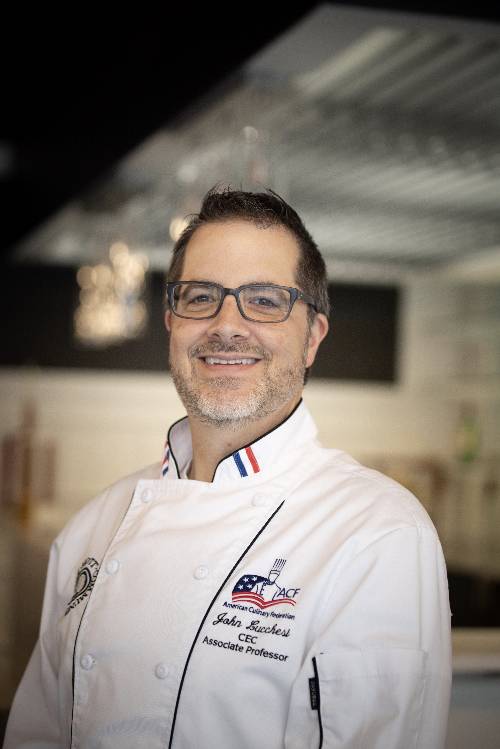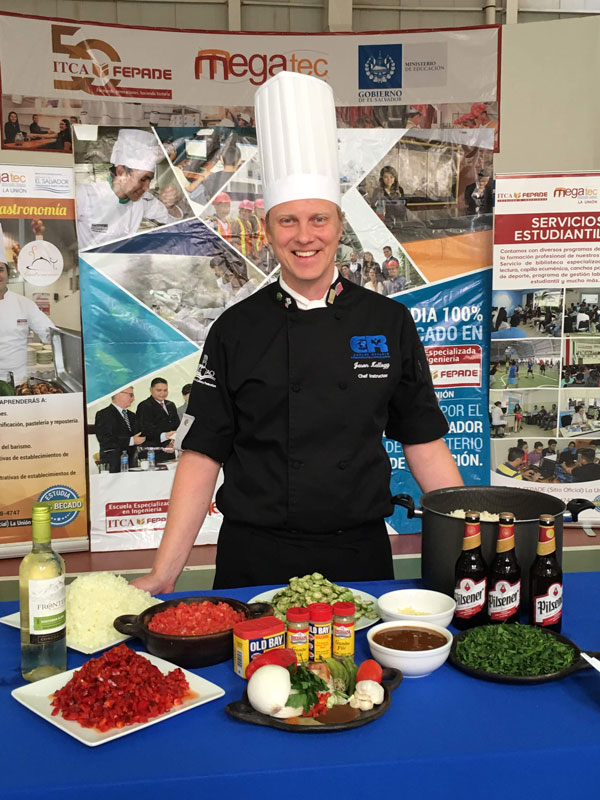
Food for Thought from Two Culinary Instructors
03 June 2021Two instructors discuss their ideas on how distance education has altered culinary education.
By Lisa Parrish, GMC Editor
Many culinary instructors responded to my request for information on how this past year changed the future of culinary education. John Lucchesi and Jason Kellogg answered with thought-provoking ideas concerning how to teach culinary topics in the future, what students learned this year, and how one school is reimagining its curriculum with an eye toward diversity in cooking and cuisines. Read their thoughts below:
 John Lucchesi
John Lucchesi
Associate Professor Culinary Arts/Food Service Management
Mott Community College Culinary Arts Institute
All three instruction modes (online, hybrid and face-to-face) should be a part of culinary education. Also, what motivated students learned during his distance education classes.
How and why distance education should be included in a culinary education:
“They (the administration) plan to continue with all three formats using the one that fits the topic matter the best. Those classes that showed online success will continue to be offered online as well as offerings of hybrid and face-to-face where necessary.
“It really is overdue and many schools have now realized that these types of offerings should have been available all along. I feel many institutions were focused on what was good for them and NOT for the student and now they are realizing their mistake.
“I feel that if your institution can offer a course online then they should. Instructors need to realize however, that the online format for an educational trade that has always been face-to-face will take some reorganization of the curriculum, approach and delivery. Hands-on courses like knife skills, butchery, a la carte cooking, restaurant service, and wine and food pairing should definitely be delivered in the face-to-face format, but with the use of technology and the vast array of resources, many of these classes can also take on a hybrid delivery method.
“With some work from the instructor, they can successfully incorporate ideas like the flipped classroom, research prior to production, viewing of techniques, recipes, and skillsets at home for students to then perform in class for evaluation. It can be done, but it takes a lot of reimagination on the instructor’s part to build lesson plans that are more structured, organized, defined, and complete.
Motivated students learned far more than culinary topics:
“Many (of my motivated) students realized that you get out of your education what you put into it and it is NOT about the instructor opening up your head and dumping information into it so you can spill it back out when the test comes. They improved on their critical thinking, research abilities, problem-solving skills, and time management skills. I feel they not only learned the material, but they learned how to organize their lives, studies, hobbies, and time.”
 Jason Kellogg
Jason Kellogg
Lead Chef Instructor
Carlos Rosario School, Washington DC.
Teaching diversity in cuisines and cooking:
“While we have adapted to COVID-19 in many ways, there has been one big plus from this whole thing. We paused half of our classes to reformulate our curriculum and will be offering new and improved classes this fall. Not only has the pandemic reshaped our industry, but we are also taking a stand toward serving our Black, Indigenous and People of Color (BIPOC) population better.
“The killings of too many people of color over that last year have shown us that we need to focus on decolonizing culinary arts training. We will do this by moving away from the typical "European-based" training model and focus instead on technique and menu-driven pedagogy. For example, instead of making all the five French mother sauces, we will use diverse menus to teach sauce cookery and the different ways sauces are thickened throughout the world.
“It is now more important than ever to ensure that culinarians are taught to appreciate diversity in cuisines and cooking. It is also our duty as culinary arts instructors to lead the way on this front. We are stronger together!”
